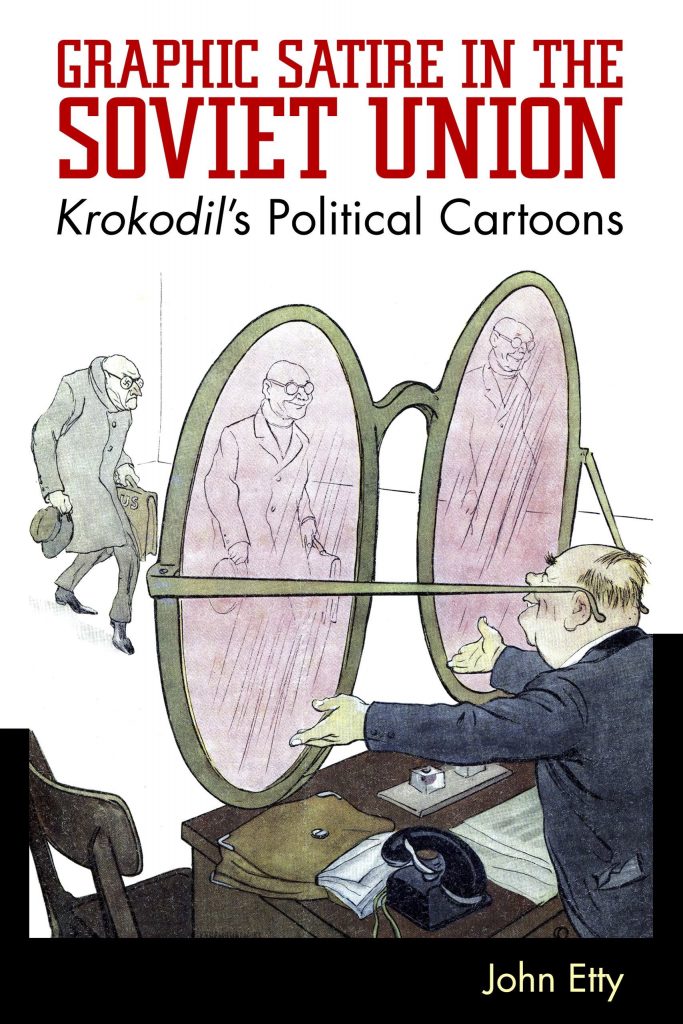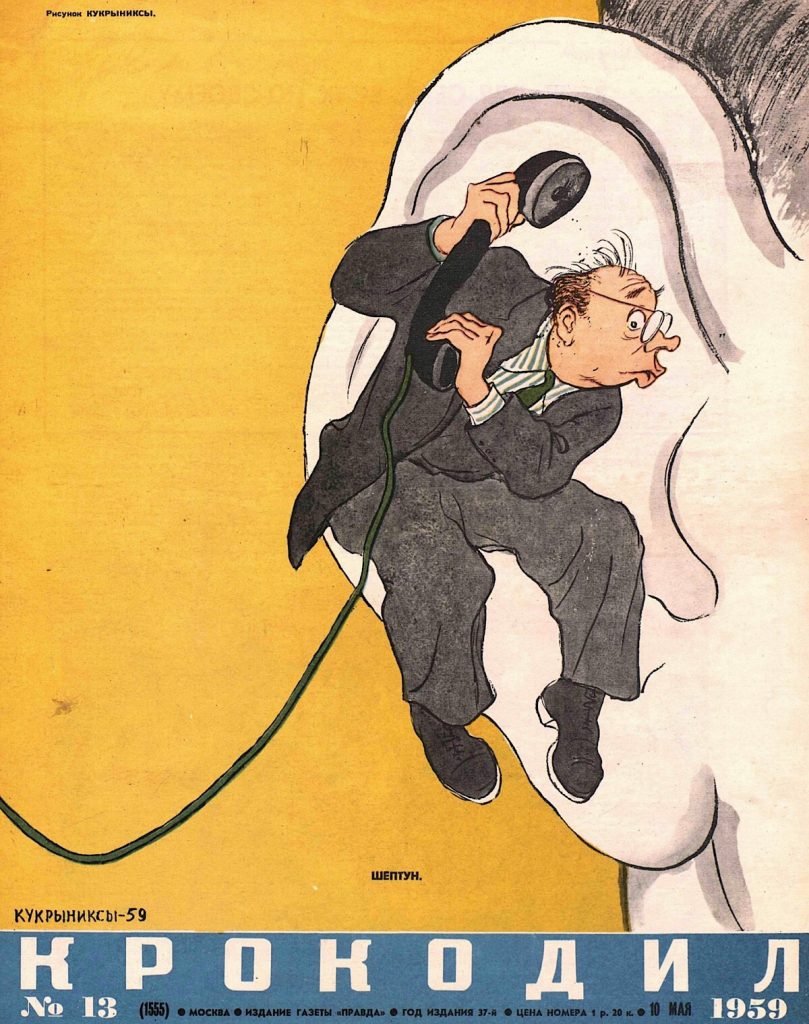 A new book delving into one of the best-known examples of Soviet satire has just been published by the University Press of Mississippi. Graphic Satire in the Soviet Union: Krokodil’s Political Cartoons by John Etty lifts the lid on Krokodil, which offered some extraordinary cartoon art within a hugely propagandistic publication.
A new book delving into one of the best-known examples of Soviet satire has just been published by the University Press of Mississippi. Graphic Satire in the Soviet Union: Krokodil’s Political Cartoons by John Etty lifts the lid on Krokodil, which offered some extraordinary cartoon art within a hugely propagandistic publication.
After the death of Joseph Stalin, Soviet-era Russia experienced a flourishing artistic movement due to relaxed censorship and new economic growth. In this new atmosphere of freedom, Russia’s satirical magazine Krokodil (The Crocodile) became rejuvenated.
John Etty explores Soviet graphic satire through Krokodil and its political cartoons, investigating the forms, production, consumption, and functions of Krokodil, focusing on the period from 1954 to 1964.


For most of its life, Krokodil consisted of a sixteen-page satirical magazine comprising a range of cartoons, photographs, and verbal texts. Authored by professional and nonprofessional contributors and published by Pravda in Moscow, it produced state-sanctioned satirical comment on Soviet and international affairs from 1922 onward.
Krokodil remained the longest-serving and most important satirical journal in the Soviet Union, unique in producing state-sanctioned graphic satirical comment on Soviet and international affairs for over seventy years. Its content was always either entirely anti-Western and pro-Soviet, the use of historical Russian figures in images often related to contemporary events, injecting a destabilising element into the images’ meaning.
Soviet citizens and scholars of the USSR recognized Krokodil as the most significant, influential source of Soviet graphic satire. Indeed, the magazine enjoyed an international reputation, and many Americans and Western Europeans, regardless of political affiliation, found the images pointed and witty.
Astoundingly, the magazine outlived the USSR but until now has received little scholarly attention. Etty’s analysis of Krokodil extends and enhances our understanding of Soviet graphic satire beyond state-sponsored propaganda.
““This highly sophisticated and intellectually exciting study is a tour de force of visual and political analysis that overturns traditional notions of Cold War strategies,” enthuses Helena Goscilo, Professor of Slavic Studies at the Ohio State University. “With cartoons by such celebrated graphic satirists as the Kukryniksy and Ivan Semenov, the study engages transmedia theory while rigorously adhering to a non-partisan, historically informed base that takes into account the publication’s telos, patterns of production, aesthetic/humorous considerations, and audience reception.
“The impeccable scholarship alone is worth the price of the book, though the Conclusion serves as a superlative summation not to be missed. Teeming with insights and rigorously argued, Graphic Satire in the Soviet Union is indisputably one of the most riveting monographs in Slavic Studies to appear in the last few years.”
• Graphic Satire in the Soviet Union: Krokodil’s Political Cartoons by John Etty | University Press of Mississippi. ISBN: 978-1-4968-2052-5 – available here from Amazon (affiliate link)
• Follow John Etty on Twitter @john_etty
• Some of the creators who worked on Krokodil have documented their work here on Live Journal (in Russian)
• For American readers – East View in Minneapolis houses the entire collection of Krokodil from the very first issue to the very last. You can learn more about the Krokodil Digital Archive here: www.eastview.com
The founder of downthetubes, which he established in 1998. John works as a comics and magazine editor, writer, and on promotional work for the Lakes International Comic Art Festival. He is currently editor of Star Trek Explorer, published by Titan – his third tour of duty on the title originally titled Star Trek Magazine.
Working in British comics publishing since the 1980s, his credits include editor of titles such as Doctor Who Magazine, Babylon 5 Magazine, and more. He also edited the comics anthology STRIP Magazine and edited several audio comics for ROK Comics. He has also edited several comic collections, including volumes of “Charley’s War” and “Dan Dare”.
He’s the writer of “Pilgrim: Secrets and Lies” for B7 Comics; “Crucible”, a creator-owned project with 2000AD artist Smuzz; and “Death Duty” and “Skow Dogs” with Dave Hailwood.
Categories: Art and Illustration, Comics Studies, downthetubes Comics News, downthetubes News